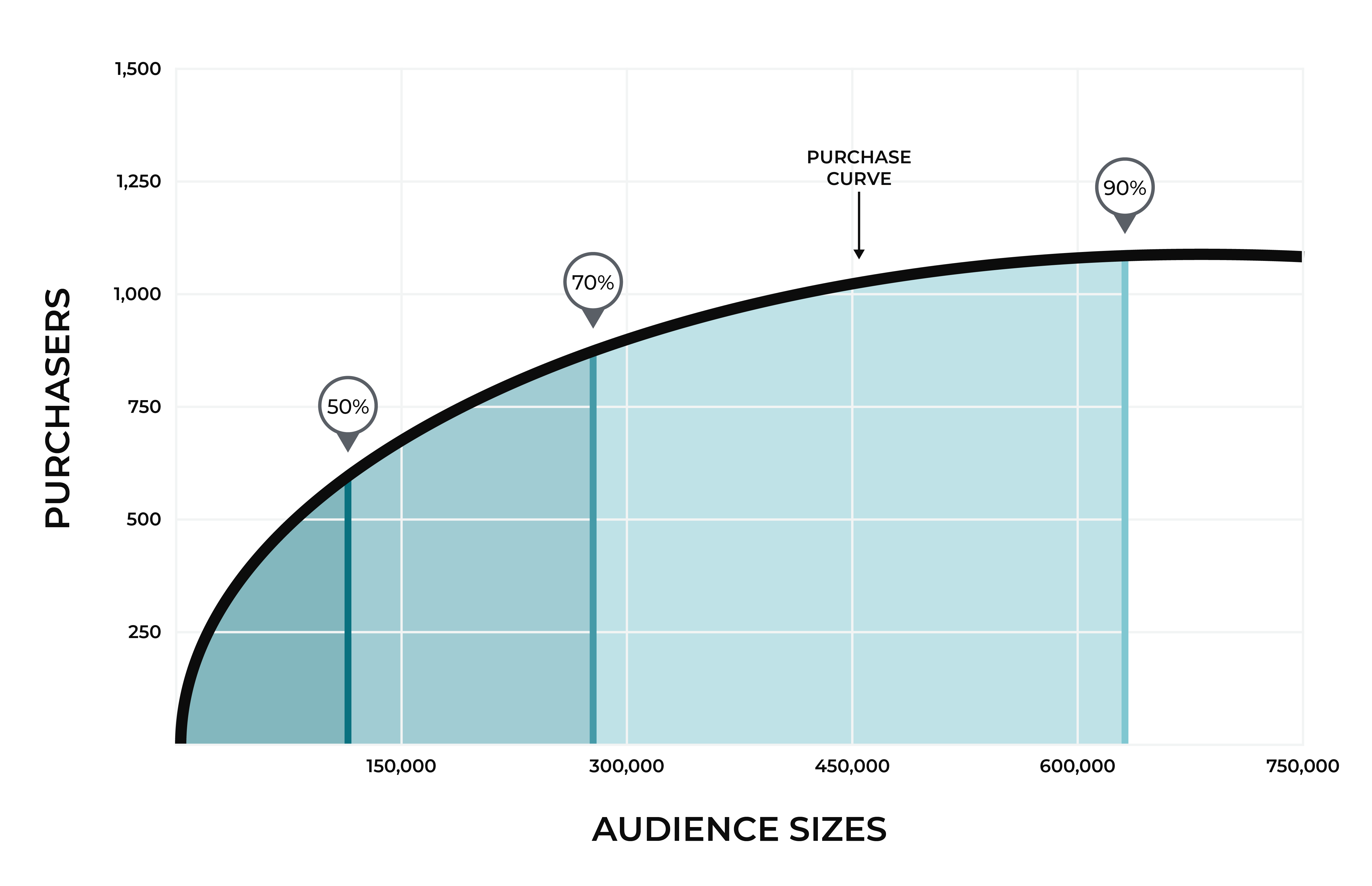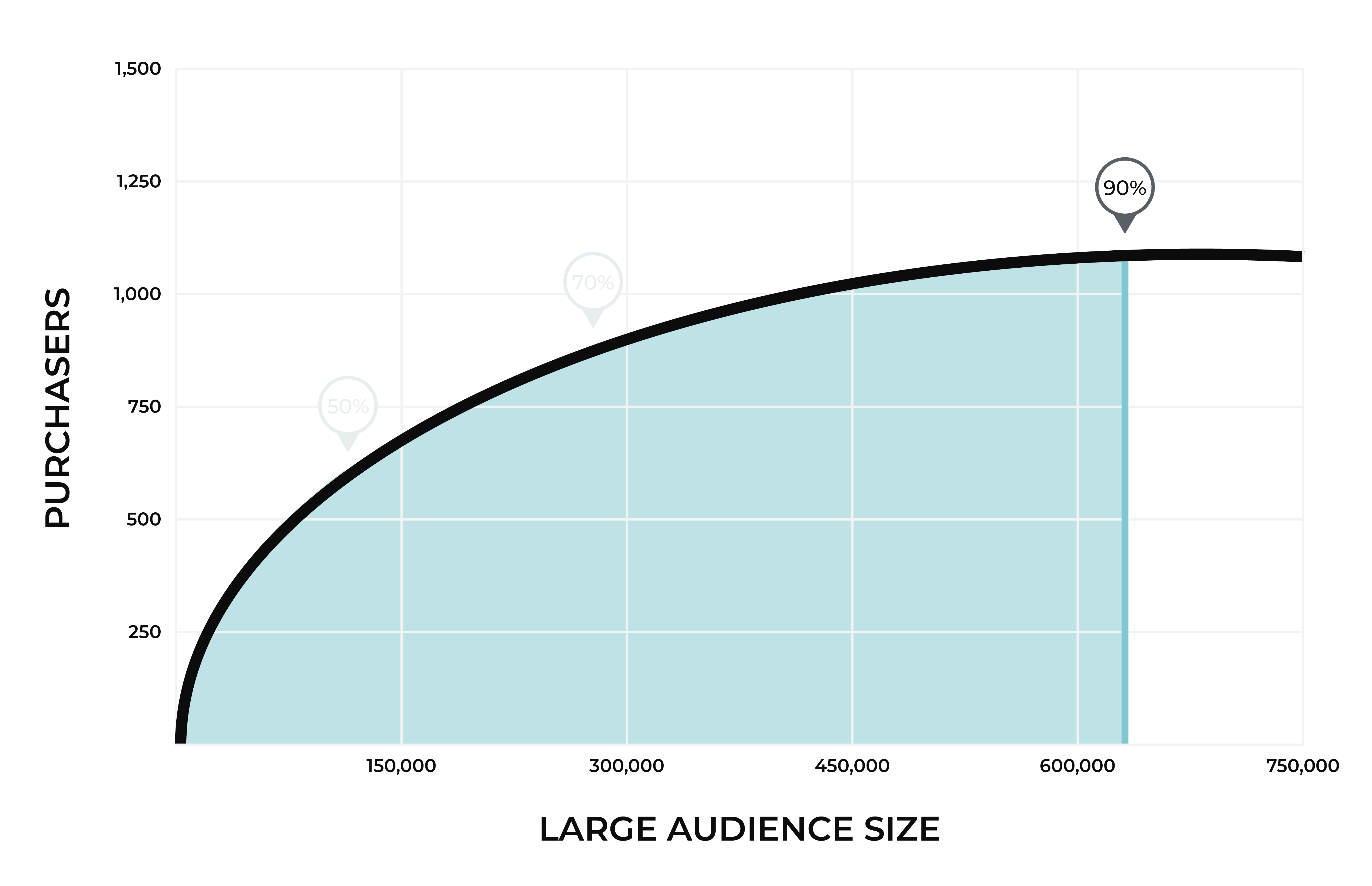Audience sizes¶
A recommended audience is a feature of Amperity that answers the following question: “Which audience size grows revenue over the next 30 days?” Amperity provides three answers to this question, in the form of recommended audience sizes: small, medium, and large. A small audience captures 50% of an audience, a medium audience captures 70%, and a large audience captures 90% of purchases for that audience over the next 30 days.
Audience size attributes include:
Recommended audience sizes identify customers who are most likely to purchase. Use recommended audience sizes to:
More effectively engage with customers for product-specific sends, such as clearance sale and new arrival announcements
Define more valuable campaigns to grow revenue for specific product categories
Drive up conversion rates
Drive down opt-outs
Determine categories, products, and trends that resonate with key segments
Recommended audience sizes are calculated using customer transaction data over a 30-day window. A purchase curve is generated, along with corresponding audience sizes that show what size audience would have been required to capture 50%, 70%, and 90% of purchases for a given product over the previous 30 days.
Audience sizes are inclusive of all smaller audience sizes.
A medium audience size (70%) includes all of your customers who are in the small audience size (50%).
A large audience size (90%) includes all of your customers who are in the small and medium audiences.
Important
Recommended audiences are not generated for products with low purchase frequencies. A product with a low purchase frequency may require a very large number of potential customers to reach the small audience size (50%).
If you need to run a campaign for a product with a low purchase frequency, consider:
Using your brand’s minimum circulation size
Defining a segment with an audience size that is 5x-20x larger than the number of customers who have purchased that product during the previous year
About the purchase curve¶
A purchase curve represents the relationship between purchases and audience size. A purchase curve adds customers, but flattens as audience sizes grow larger.
The following diagram highlights the purchase curve. The audience size is on the x-axis (horizontal) and the number of purchases is on the y-axis (vertical).

The first 20% of customers in an audience have a high degree of certainty and a strong signal. The last 20% have a much lower degree of certainty and a weak signal.
The 0-50% range quickly adds customers as the audience size grows. In this example, the purchase curve is steep for the first 100,000 customers because purchasers are being identified at a relatively fast rate.
The 50%-70% range starts to flatten out. A 70% rate requires almost 300,000 customers. At the lower end, there is still a strong signal, but at the higher end the signal has grown weaker.
The 70%-90% range requires a much larger audience size. In this example, more than 600,000 customers are required to get to a 90% audience size. This represents the degree of uncertainty when trying to reach customers in large audience sizes.
Use audience sizes to help determine the ideal number of customers to include in a segment. Compare the number of customers in the segment against the recommended audience sizes to help keep your segment at the most efficient point along the purchase curve for your use case and expected outcome.
Large audience sizes¶
A large audience represents the percentage of the total audience required to capture 90% of total purchases 30 days ago.

To find large audience sizes, start with the Audience Size Large attribute in the Predicted Affinity table, and then set its condition to is true.
Important
Combine Audience Size Large attribute with the Product Attribute attribute to build an audience size for the selected product attribute.
Medium audience sizes¶
A medium audience represents the percentage of the total audience required to capture 70% of total purchases 30 days ago.

To find medium audience sizes, start with the Audience Size Medium attribute in the Predicted Affinity table, and then set its condition to is true.
Important
Combine Audience Size Medium attribute with the Product Attribute attribute to build an audience size for the selected product attribute.
Small audience sizes¶
A small audience represents the percentage of the total audience required to capture 50% of total purchases 30 days ago.

To find small audience sizes, start with the Audience Size Small attribute in the Predicted Affinity table, and then set its condition to is true.
Important
Combine Audience Size Small attribute with the Product Attribute attribute to build an audience size for the selected product attribute.
Available operators¶
The following table lists the operators that are available to audience size attributes.
Note
These attributes have a Boolean data type. All Boolean data types share the same set of operators. Recommended operators for this attribute are identified with “ More useful” and operators with more limited use cases are identified with “ Less useful”.
Operator |
Description |
|---|---|
is false |
More useful Returns a list of customers who do not belong to the specified audience size. |
is not NULL |
Returns a list of customers who belong to all audience sizes. |
is NULL |
Returns a list of customers who do not belong to any audience size. |
is true |
More useful Returns a list of customers who belong to the specified audience size. |
